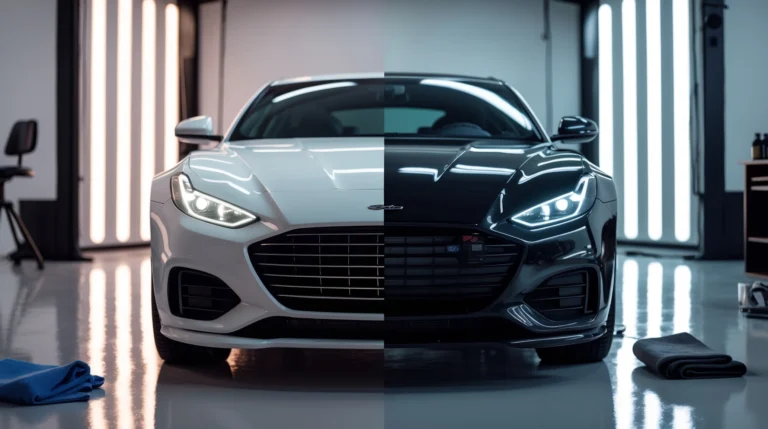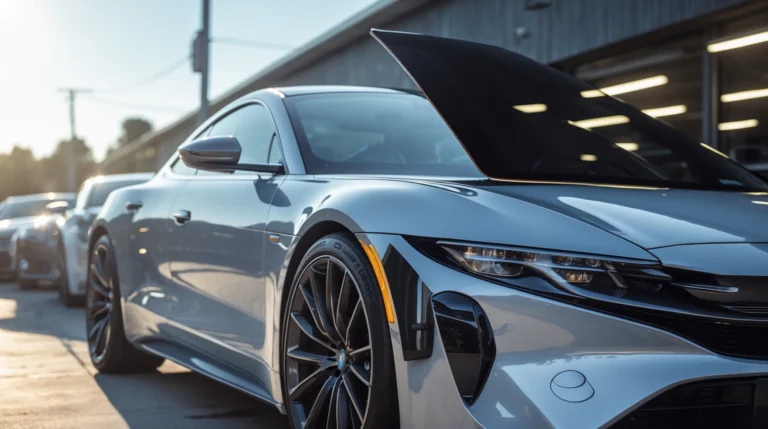Are tinted headlights legal? Tinted headlights have become a growing trend among car owners who want a sleek, custom look for their vehicles. But before applying any film or coating, it’s important to know that headlight tinting isn’t just a cosmetic choice; it’s a matter of safety and law. This guide explains what the law says, which tints are allowed, and how to stay compliant while keeping your car stylish.
Understanding the Popularity of Headlight Tinting
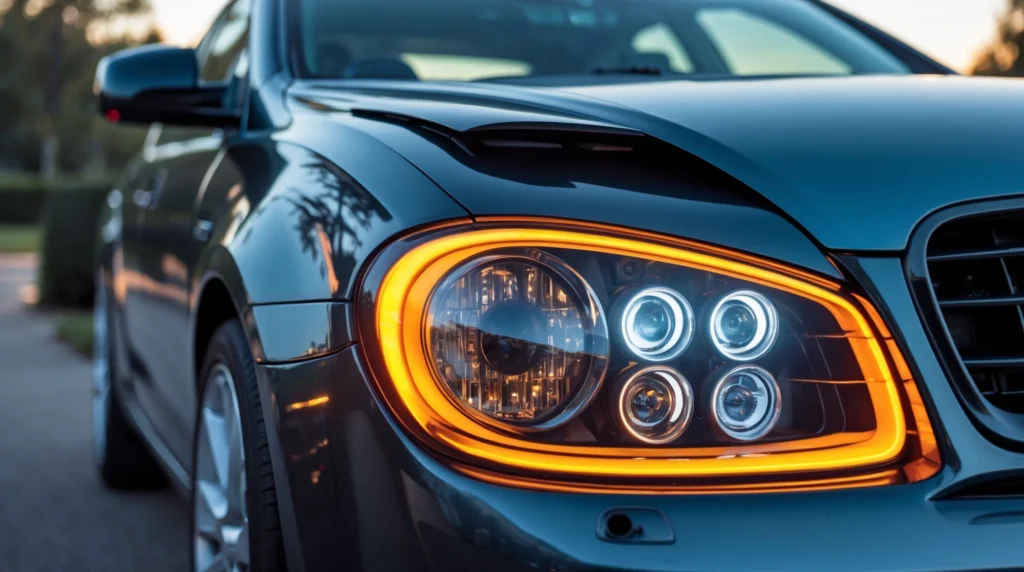
Headlight tinting is popular for the same reasons people tint their windows: it looks sharp, provides protection, and adds a personal touch. Many car owners apply a thin film to reduce glare, protect the lens from UV damage, or match the color of their vehicle. Others do it purely for aesthetics, giving their cars a darker, sportier appearance.
But style isn’t everything. When it comes to headlights, the law cares about safety. Headlights are meant to help you see clearly and help others see you. That’s why, before tinting, you should ask the question many drivers have: Are tinted headlights legal?
What “Headlight Tinting” Really Means
Tinting headlights involves applying a transparent or smoked film over the light’s surface. This can be done with vinyl wrap, spray tint, or special lens film. Each method changes how much light passes through the headlight lens, also known as visible light transmission (VLT). When the tint is too dark, the light output drops, and visibility suffers. Headlight tinting is different from decorative covers or color bulbs; it affects the light beam directly. Legal tinting means using a film that doesn’t block too much light or distort the color of the beam.
Professional shops like Riveautohaus ensure tints meet state and federal safety standards. They use tested films that protect your headlights without reducing brightness below the legal level.
Are Tinted Headlights Legal In The U.S.?
Here’s the clear answer: heavily tinted headlights are not legal in most states.
In the U.S., headlight laws are governed by both federal and state regulations. The federal standard FMVSS 108 sets strict rules for the color, brightness, and visibility of headlights. According to these standards, headlights must emit white or yellow light that’s strong enough to illuminate the road ahead for at least 500 feet on low beam and up to 1,000 feet on high beam. Most states align their laws with FMVSS 108, meaning any tint that reduces brightness or changes the color beyond the approved range is considered illegal.
That said, a light tint or protective clear film is often legal if it doesn’t reduce visibility below the required 70% VLT. Always check your local inspection requirements before modifying your headlights.
How Headlight Tint Laws Differ by State
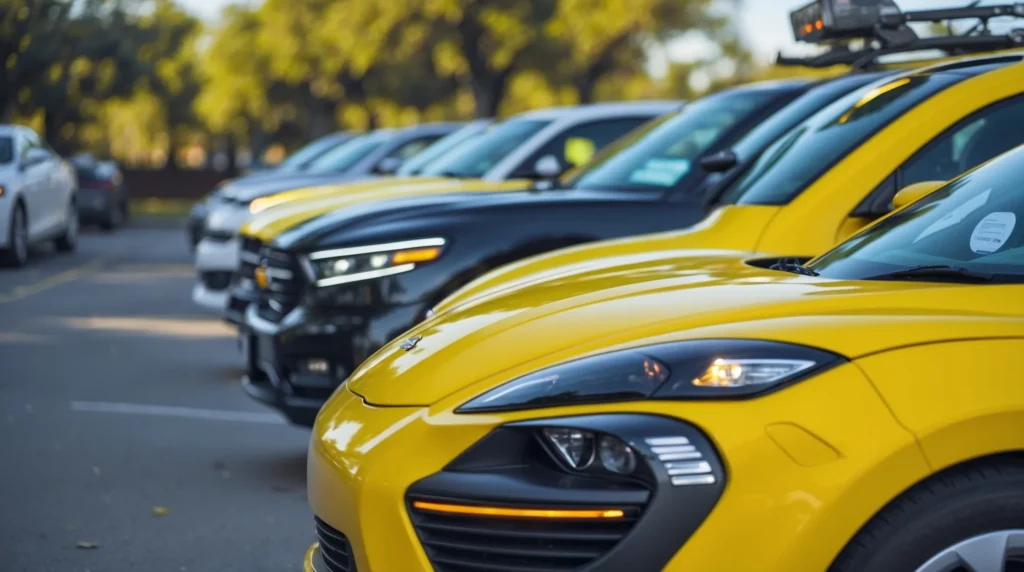
Each state has its own version of headlight color laws, so legality can change depending on where you drive.
- California Headlight Laws: Only white or yellow headlights are allowed. Any dark film or colored tint is illegal.
- Texas Headlight Laws: The law prohibits any tint that changes the color of the emitted light. Clear protective film is acceptable.
- New York Headlight Laws: Headlights must remain white; smoked or colored tints can result in inspection failure or fines.
This is why checking headlight tint laws by state is crucial. Even if your tint seems mild, an officer or inspection technician can cite you if your headlights look dim or off-color.
What Makes a Headlight DOT-Compliant
A DOT-compliant headlight meets the safety standards set by the Department of Transportation. That means it’s bright enough, properly aligned, and emits an approved color. When you buy a new car, the headlights are OEM (original equipment manufacturer) parts that already meet these requirements. If you replace or modify them, they must still comply with DOT rules.
A tinted or aftermarket headlight becomes illegal if it reduces output below 22,500 candela on low beam or exceeds 75,000 candela on high beam. It’s also illegal to block the DOT certification marks on the lens.
Professional tinting shops like Riveautohaus make sure your modifications stay within these safety limits.
Legal Headlight Colors and Visibility Standards
According to FMVSS 108 requirements, the only road-legal headlight colors are white, yellow, or amber.
These colors provide the best balance between brightness and contrast at night. Any other color, such as blue, green, or red, can confuse the road or resemble emergency vehicle lights, which is strictly illegal.
Here’s a quick breakdown:
- White or yellow: Legal nationwide.
- Blue or purple: Illegal in all states.
- Red: Illegal for forward-facing lights.
- Amber: Usually legal for signal or side marker lights.
If your tinted headlights make your beam appear bluish or reddish, your car could fail a state inspection or receive a fine.
Key Technical Limits to Know
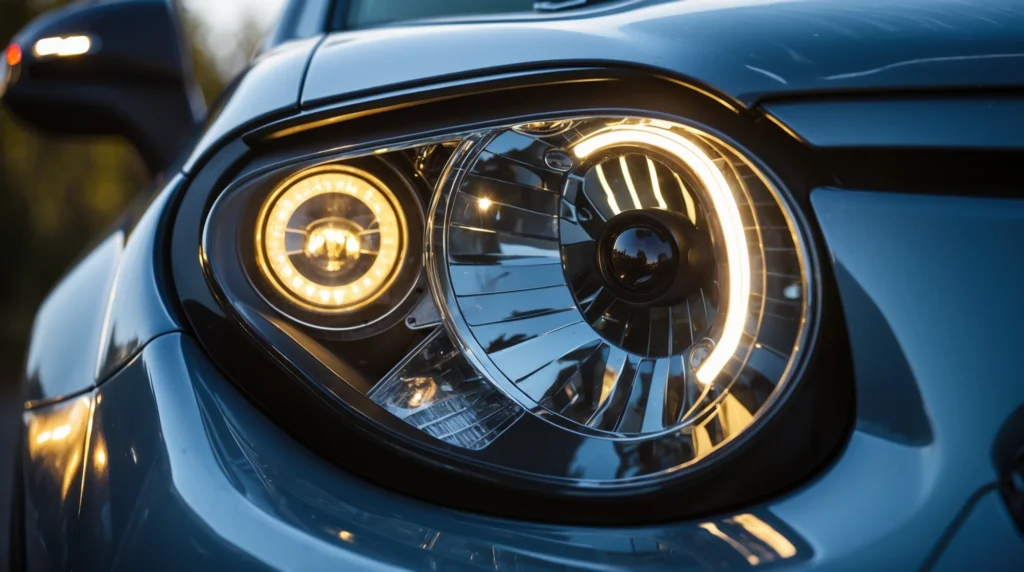
To understand why some tints are legal and others are not, let’s break down the main technical standards that apply to headlights:
- Headlight Tint Percentage: Most states require that headlights allow at least 70% of light to pass through (VLT 70%).
- Color Temperature (3000K–6000K): This range produces clear white or slightly yellow light, which is road-safe. Anything above 6000K gives a bluish hue that can be illegal.
- Headlight Brightness (22,500–75,000 Candela): This ensures enough illumination without blinding other drivers.
- Beam Pattern and Alignment: Headlights must be properly aligned to illuminate the road evenly and avoid glare.
If any of these factors are affected by a tinted film, your headlights could be considered unsafe or non-compliant.
Safety Risks of Over-Tinted Headlights
While tinted headlights may look appealing, they can create serious safety risks.
Dark tints reduce brightness and visibility distance (500–1000 feet), especially in fog, rain, or at night. This makes it harder to see road hazards, pedestrians, or wildlife in time. They can also increase headlight glare and blinding for oncoming drivers because the light scatters differently through tinted film. Studies show that poor visibility contributes to thousands of nighttime accidents every year.
Remember, headlights are a safety device, not a style accessory. Keeping them bright and properly aligned is far more important than the cosmetic benefit of a darker look.
Aftermarket vs. OEM Headlights: What’s Legal
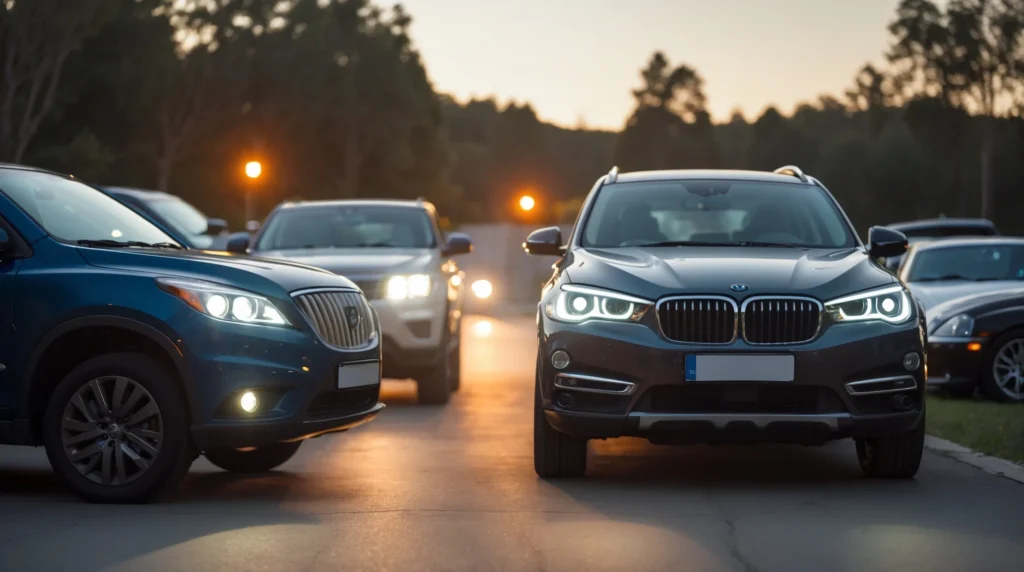
Many car owners replace factory headlights with aftermarket versions for better performance or a new look. While that’s perfectly fine, not all aftermarket headlights are DOT-compliant. OEM headlights are tested and approved for legal use. Aftermarket headlights must still meet the same standards for brightness, beam pattern, and color. Adding tint to aftermarket lights makes compliance even trickier.
When in doubt, look for the DOT marking on the lens or check the manufacturer’s certification. If the headlights don’t have a DOT or SAE marking, they’re not legal for road use in the U.S.
How to Stay Street-Legal in Farmington Hills
For drivers in Farmington Hills, Michigan, headlight tinting falls under the state’s vehicle equipment laws. Michigan follows federal FMVSS 108 guidelines, meaning only white or yellow headlights are allowed. Local inspectors also check the beam pattern and light brightness during annual inspections. Even a mild tint could fail if it reduces visibility too much.
To stay safe and compliant, consult a professional installer before applying any headlight film. They can test the VLT percentage and brightness levels using certified tools.
Best Practices Before You Tint
If you’re still considering tinting your headlights, here are some best practices to follow:
- Use only light, transparent films designed for headlight use.
- Avoid DIY spray tints or dark coatings that change color or reduce brightness.
- Make sure your tint is clear or very light smoke, not opaque.
- Check state inspection requirements and DOT compliance before installation.
- Keep your headlights clean and properly aligned.
- Always test brightness and beam pattern after applying tint.
Following these steps helps you maintain both style and safety.
Final Thoughts
So, are tinted headlights legal? It depends on how dark the tint is and where you live. In most states, a very light, clear protective film is allowed, but dark or colored tints are not. Headlights must remain bright enough to meet visibility standards and emit white or yellow light only. If you want to upgrade your car’s look while staying compliant, choose a professional shop that understands headlight color laws, FMVSS 108 requirements, and DOT regulations.
Looking to customize your headlights safely and legally?
Contact the experts at Riveautohaus today. Our certified technicians can help you choose a tint that enhances your car’s style without risking a ticket or inspection failure. Drive smarter, safer, and in full compliance with the law.

